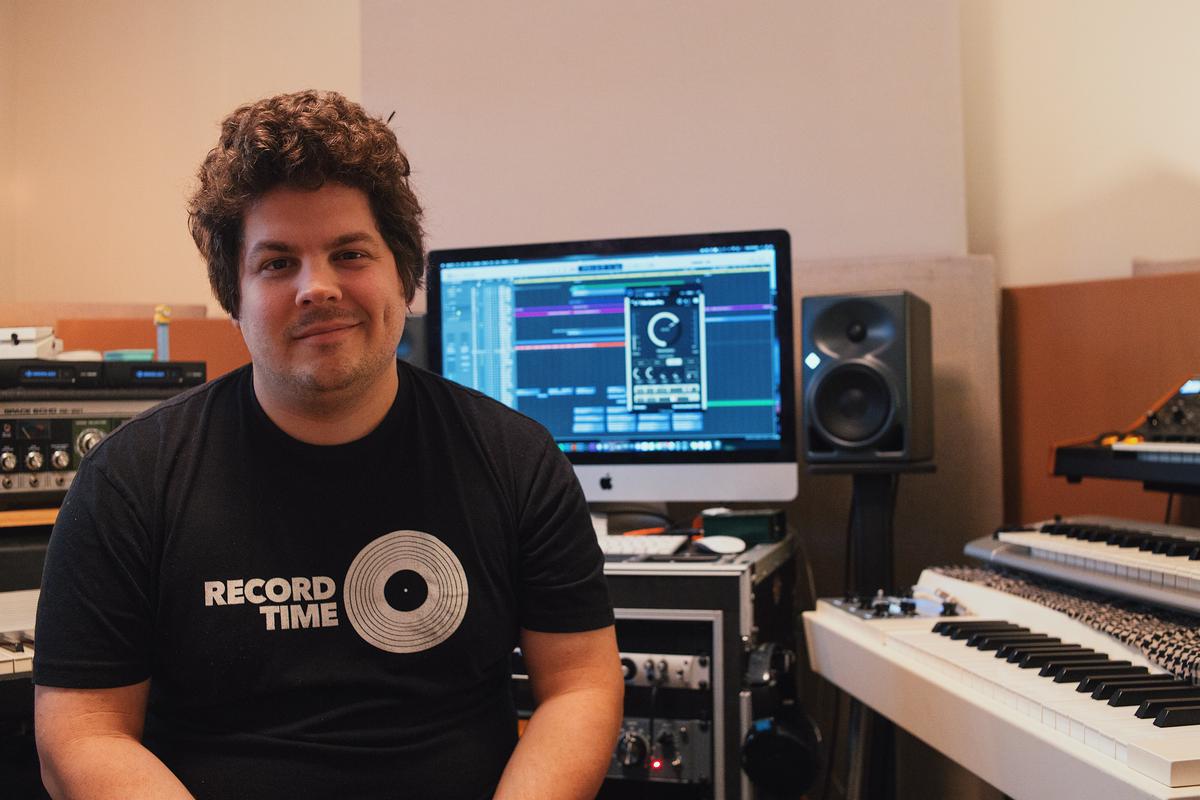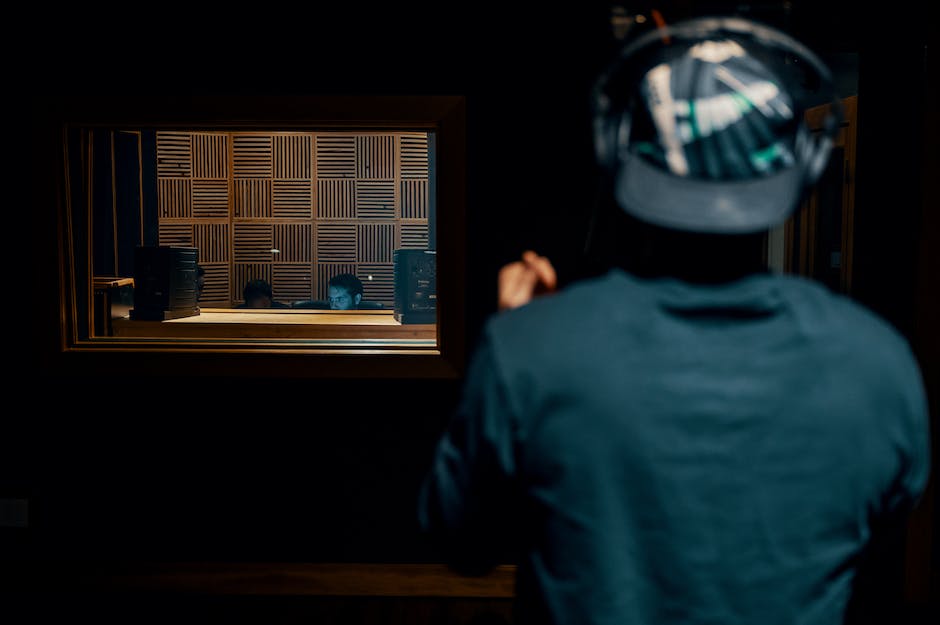Unlocking the potential in your own home for high-quality audio recording doesn’t have to max out your credit card. It’s in harmonizing the perfect blend of essential audio equipment, implementation of effective recording techniques, and the art of post-recording audio editing that professional sounding audio can truly be achieved. This dynamic triad of audio accomplishment namely, understanding basic audio equipment, mastering audio recording techniques, and executing post-recording audio editing, sets you on the path to producing excellent sound on a budget. Herein, we delve into these integral spheres of audio recording, from your initial equipment setup to the final mastering stage, guiding you through the process of achieving professional sound at home without breaking the bank.
Understanding Basic Audio Equipment
There’s a harmonious blend of intrigue and enthusiasm reserved for those captivated by the mesmerizing sway of music. Frequent flyers on the festival scene, eager attendees of the most groundbreaking live shows, and the spirited ones constantly deciphering the hidden rhythms of life – all embrace music as the soul’s language. And, often accompanied by this melodious inclination, is an urge to create, to join the symphony and make the magic happen. One may wonder, “What’s the essential audio equipment I need if I’m on a budget?” Let’s dive into the vibrant world of sound and peruse through it.
Dwell in the realm of affordability doesn’t mean you have to skimp on quality. Enter the world of music production, readily accessible, if you understand what instruments will resonate with your creative chord and wallet alike.
Tower 1 of our equipment citadel is an Audio Interface
. An unsung hero, it works to translate analog signals into digital ones that your computer understands—thus ensuring that the music you create is effectively communicated. The Focusrite Scarlett 2i2 or the PreSonus AudioBox USB 96 are wallet-friendly gateways into this universe, offering excellent sound quality and user-friendly design.
Moving on, we arrive at our next destination – a solid pair of Studio Headphones
. Critical for accurate audio mixing and mastering, they’re your personal sound sanctuary that allows the inclusion of the minutest details. The Audio Technica ATH-M50x provides professional-grade quality while treading the affordable path. They offer exceptional clarity and a deep, accurate bass response – the perfect companion for music adventurists.
Next, we step into the realm of Studio Monitors
. If you desire to hear the sound exactly as it is, studio monitors are a must. They ensure an accurate, uncolored representation of your music. Prominent in the affordable variety, the PreSonus Eris E3.5-3.5 nearfield studio monitor is a revered choice highly recommended for beginners.
The last but perhaps the most noticeable piece of the price-conscious music arsenal is the MIDI Controller
. This ingenious tool translates physical actions into digital data, offering you the ability to play virtually any sound you wish. The Akai Professional MPK Mini MKII reigns supreme in this sector, providing optimal functionality without burning a hole in the pocket.
Finally, an honorary mention goes to the Microphone
. While not essential for every music prodigy, a quality mic can significantly enhance vocal recordings or acoustic instruments. The Audio-Technica AT2020 is an inexpensive but highly effective addition to the repertoire, allowing beginners and budget-conscious creators to get their voices heard.
And such concludes our rendezvous within the realm of budget audio equipment, a realm where quality meets affordability. The symphony is waiting! Embrace these instruments of creation, and step onto the stage of musical manifestation.

Photo by techivation on Unsplash
Audio Recording Techniques
From the inception of a song idea to its final mix, raising the bar to achieve a professional sound in recordings is a process akin to assembling a heavily intricate jigsaw puzzle. While your equipment, as previously discussed, will serve as your staunch allies in this endeavor, entrusting the entirety of the task to the machines can lead you astray. This endeavor goes far beyond the material; it’s about exploring the invisible terrains of sound frequencies, amplification, and sound quality.
Diving into frequencies first, if there’s one skill aspiring sound professionals should master, it’s rolling off the low frequencies that don’t contribute anything musical to the mix. Often, instruments unintentionally reproduce these sounds which can muddy up the entire mix. Eliminating them with a high-pass filter eases this problem and sharpens the overall quality of the sound.
Balancing is the critical triangle point between frequencies, volume, and panning. Finding the perfect equilibrium among three often involves making many micro-adjustments until it ‘clicks’. Experiment with balancing one sound against another. For example, when a kick drum and a bass guitar compete for the same frequency space, try to EQ wisely. Perhaps you will prioritize the kick in the lower spectrum and add a little high frequency to the bass for definition. Remember, subtlety is the key; minimal adjustment can even out the playing field without making drastic changes in individual sound character.
Never underestimate the power of the lowly microphone position. It can make or break a recording. Many recording newbies make the common mistake of positioning mics too close to the sound source, thereby capturing unwanted noises. The placement of the microphone depends on the instrument. For instance, when recording a drum kit, the microphone should ideally be overhead to capture the whole sound.
Moving on to vocals, the emotional core of many songs. Record each vocal line several times to gather a variety of nuances. The artful blending of these tracks, often known as comping, can bring your entire vocal recording to life. The trick here is to catch the feeling of the song with each singer’s unique flavor.
Also, take advantage of the power of plugins. They contribute significantly to achieving a professional sound. Plugins allow you to simulate professional hardware in your own bedroom. Make sure you educate yourself about which plugins to use for achieving the desired effects. The world of plugins can be overwhelming, but armed with a little knowledge, the treasure chest of options becomes a tool kit for your creativity.
Compressing tracks cannot be ignored. It plays a significant role in controlling the dynamics of the song. A moderate squeeze can add a punch to your mix without killing the dynamic range. Remember, over-compression can make a track lifeless, use it tastefully.
Last but not least, create a sound that resonates with your audience and serves the song instead of merely flaunting technical prowess. Remember, you are creating music, a universal expression of emotions, not just assembling sound frequencies. So let it flow naturally and capture the soul of the sound fluently. Happy recording!

Post-Recording Audio Editing
Picking up where we left off, we are now going to delve into the nuanced art of audio production. There’s more to achieving a harmonious sound than just having the right equipment; understanding how to optimize your audio files through careful editing plays a substantial role in this auditory dance.
Rolling off low frequencies with a high-pass filter is a good starting point in the editing process. This ensures that the rumble, hum, or excess ambient noise often found in lower frequencies doesn’t contaminate the other elements in your mix. Keep in mind, the reduction should be just enough to clear out the unwanted rumble, ensuring the original tonal qualities of the track remain intact paying homage to the pure intentions of the song.
With their audio landscape coming into focus, the accomplished producer will then balance frequencies with an equalizer, adjust the volume of each track, and determine optimal panning positions. Each musical element, from the bellow of a bass to the tweet of a high-hat, should occupy its unique space to prevent a congested mix. Panning can add depth to your mix, creating an enveloping and rich auditory experience reminiscent of a live performance.
Speaking of a live performance, the importance of microphone position should never be discounted. The microphone is the aria’s paintbrush, acting as an infectious liaison between the performer and the audience. For just as a portrait can be affected by the angle of the paintbrush, the sound recording will inevitably be affected by the position of the microphone.
Moving on to vocals, the technique of comping, which involves selecting the best segments from multiple takes, can make all the difference in presenting a cohesive and emotive vocal performance. Even the most gifted vocalists are likely to produce variations in their takes, and comping essentially curates these variations to form the ultimate performance.m
Once you have your tracks recorded and the foundations of your mix established, it’s time to explore the creative world of plugins. Transform your sounds with reverb for space, delay for echo, or saturation for warmth. In today’s digital era, an extensive array of free and paid plugins is available to lend your mix a professional polished sheen.
Another crucial tool in the audio editing process is compression. Compress tracks to provide control over their dynamic range; this technique keeps the volume in check, prevents distortions, and ensures a smooth listening experience. A well-compressed track is like a finely-tuned orchestra, each instrument playing its part, harmonizing and rising in crescendo without drowning out its counterparts.
Finally, and perhaps most importantly, we move towards creating a sound that resonates with the listener. Each decision made during the editing process should have the song as the focal point. Whether melting hearts with a soft ballad or making the pulse quicken with a raging anthem, the sound should serve to elevate the song’s emotional impact, bridging the gap between the performer and the audience.
The melody of music is a universal language that weaves together the diversity of mankind, flowing through borderlines and cultural barriers with unrepentant grace. Remember, each song is an intimate portrayal of the artist’s inner universe. As an audio engineer, your role is not to remake this universe, but to enhance it, to clear the fog that may obscure its beauty, and to amplify its power. By doing so, we dance in this marvelous equilibrium of music creation together. Such is the marvelous power and joy of audio editing.

Once armed with an understanding of basic audio equipment and the know-how of its utilization, along with the knowledge of effective recording techniques, you’re set to embark on your journey into budget friendly, home recording. The final ingredient, post-recording audio editing, ties this all together, allowing you to fine-tune your audio, mitigate noises, balance audio levels, add creative effects, and master the audio for that final, professional touch. Understanding and applying these realms of knowledge doesn’t just pave the way towards budget audio recording, but also empowers you with control over your creative process. So fire up that audio editing software and set up that microphone, as the power to create professional sound at home is truly in your hands.

Comments.
Currently there are no comments related to this article. You have a special honor to be the first commenter. Thanks!